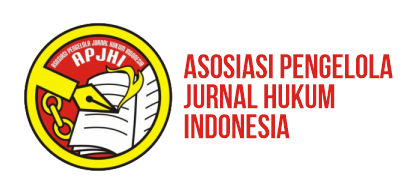Analisis Perbandingan Peran Kamar Kedua Parlemen dan Kekuasaan Kehakiman dalam Proses Pemberhentian Presiden
DOI:
https://doi.org/10.31078/jk1521Keywords:
Mahkamah Konstitusi, Kekuasaan Kehakiman, Parlemen Kamar Kedua, Pemakzulan, Pemberhentian PresidenAbstract
Proses pemakzulan atau pemberhentian Presiden menurut UUD 1945 melibatkan secara aktif tiga lembaga negara berbeda, yaitu DPR, Mahkamah Konstitusi, dan MPR. Proses akhir dari pemberhentian Presiden bukanlah di tangan Mahkamah Konstitusi, namun terletak pada sidang istimewa MPR yang terdiri dari anggota DPR dan anggota DPD. Dengan demikian, anggota MPR yang berasal dari anggota DPD sebenarnya memiliki peran terbatas secara perorangan untuk turut serta menentukan pemberhentian Presiden karena tidak melibatkan DPD secara kelembagaan sebagai kamar kedua parlemen (second chamber). Oleh karenanya, penelitian ini bertujuan untuk memberikan analisis perbandingan mengenai sejauh mana peran kamar kedua parlemen dan kekuasaan kehakiman dalam proses pemberhentian Presiden di lima belas negara berbeda, baik terhadap negara yang menggunakan sistem pemerintahan presidensial, sistem parlementer, ataupun sistem campuran. Penelitian ini menggunakan metode kualitatif melalui pendekatan perbandingan konstitusi dengan bersumber pada studi kepustakaan. Berdasarkan analisis perbandingan yang dilakukan maka diperoleh kesimpulan bahwa kamar kedua parlemen di banyak negara memiliki peran sangat penting dalam menentukan pemberhentian Presiden. Kemudian, sebagian besar negara yang diteliti juga turut melibatkan kekuasaan kehakimannya melalui Mahkamah Konstitusi, Mahkamah Agung, atau Dewan Konstitusi. Lembaga ini menilai usulan atau dakwaan dari parlemen mengenai bersalah atau tidaknya Presiden atas dugaan pelanggaran konstitusi atau kejahatan pidana lainnya. Meskipun demikian, negara-negara tersebut umumnya tetap menyerahkan keputusan akhir mengenai pemberhentian Presiden kepada parlemen.The impeachment process against the President according to the 1945 Constitution of Indonesia actively involves three different state institutions, namely the House of Representative (DPR), the Constitutional Court (MK), and the People’s Consultative Assembly (MPR). The final process of the impeachment in Indonesia is not in the hand of the Constitutional Court, but it lies in a Special Session of the MPR consisting of members of the DPR and members of the Regional Representative Council (DPD). Thus, the individual role of the MPR members who come from the DPD members to participate in determining the impeachment of the President is limited because it does not involve the DPD institutionally as the second chamber of parliament. Therefore, this research aims to provide a comparative analysis concerning the roles of the second chamber of parliament and judicial power in the impeachment process against the President in fifteen countries that implement three different systems of government, which are the presidential system, the parliamentary system, and the semi-presidential system. This research used a qualitative method and a comparative constitutional approach based on a literature study. It concluded that the second chamber of parliament in various countries has very important roles in deciding the impeachment process of the President. Moreover, the judicial powers through the Constitutional Court, the Supreme Court or the Constitutional Council also involved in deciding whether the President is guilty of the alleged violations against the constitution or common criminal offenses. Nevertheless, in most of the countries studied, the final decision on the impeachment process based on the Court’s decision is still given to the parliament.
References
Asshiddiqie, Jimly, 2007, Pokok-Pokok Hukum Tata Negara Indonesia, Jakarta:Bhuana Ilmu Populer.
________, 2011, Hukum Tata Negara dan Pilar-Pilar Demokrasi, Jakarta: Sinar Grafika.
________, 2011, Konsitusi dan Konstitusionalisme Indonesia, Jakarta: Sinar Grafika.
Ball, Allan R. dan B. Guy Peters, 2000, Modern Politics and Goverment, New York: Palgrave Macmillan.
Budiardjo, Miriam, 2008, Dasar-Dasar Ilmu Politik, Jakarta: Gramedia Pustaka Utama.
König, Thomas, 2011, “Bicameralism and Party Politics in Germany: an Empirical
Social Choice Analysis”, Political Studies, Vol. 49, No. 3, h. 411-437.
Marzuki, Peter Mahmud, 2014, Penelitian Hukum, Jakarta: Pranamedia Group.
Russell, Meg, 2013, “Rethinking Bicameral Strength: A Three-Dimensional Approach”, The Journal of Legislative Studies, Vol. 19, Issue 3, h. 370-391.
Shell, Donald, 2001, “The History of Bicameralism”, The Journal of Legislative Studies, Vol. 7, Issue 1, h. 5-18, DOI: 10.1080/714003862.
Sirajudin dan Winardi, 2015, Dasar-Dasar Hukum Tata Negara Indonesia, Malang: Setara Press.
Strong, C.F. 1996, Konstitusi-Konstitusi Politik Modern, Penerjemah : Derta Sri Widowatie, Bandung: Nusa Media.
Verney, Douglas V., 1992, “Parliamentary Government and Presidential Government”, dalam Arend Lijphart (ed), Parliamentary versus Presidential Government, New York: Oxford University Press.
Wignjosoebroto, Soetandyo, 2011, “Ragam-Ragam Penelitian Hukum”, dalam Sulistyowati Irianto dan Shidarta, Metode Penelitian Hukum: Konstelasi dan Refleksi, Jakarta: Yayasan Pustaka Obor.
Yudho, Winarno dkk., 2005, Mekanisme Impeachment dan Hukum Acara Mahkamah Konstitusi (Laporan Penelitian), Jakarta: Kerjasama MKRI dengan Konrad Adenauer Stiftung.
Zoelva, Hamdan, 2005, Impeachment Presiden, Jakarta: Konstitusi Press.
B. Konstitusi
Aljazair, Constitution of Algeria, ditetapkan pada 1989, diberlakukan kembali pada 1996 dengan amendemen hingga 2016.
Argentina, Constitution of Argentina, disahkan pada 1853, yang diberlakukan kembali pada pada 1983, dengan amendemen hingga 1994.
Azerbaijan, Constitution of Azerbaijan, ditetapkan pada 1995 dengan amendemen hingga 2016.
Bulgaria, Constitution of Bulgaria, ditetapkan pada 1991 dengan amendemen hingga 2015.
Brasil, Constitution of Brazil, ditetapkan pada 1988 dengan amendemen hingga 2017.
Finlandia, Constitution of Finlandia, ditetapkan pada 1999 dengan amendemen hingga 2011.
India, Constitution of India, ditetapkan pada 1946 dengan amendemen hingga 2016.
Indonesia, Undang Undang Dasar Negara Republik Indonesia 1945, ditetapkan pada 1945 dengan amendemen hingga 2002.
Italia, Constitution of Italy, ditetapkan pada 1947 dengan amendemen hingga 2012.
Jerman, Constitution of Germany, ditetapkan pada 1949 dengan amendemen hingga 2014.
Perancis, Constitution of France, ditetapkan pada 4 Oktober 1958 dengan amendemen hingga 2008.
Rusia, Constitution of Russia, ditetapkan pada 12 Desember 1993 dengan amendemen hingga 2014.
South Africa, Constitution of South Africa, ditetapkan pada 1996 dengan amendemen hingga 2012.
The Philippines, Constitution of the Philippines, ditetapkan pada tanggal 2 Februari 1987, dan berlaku efektif pada 11 Februari 1987.
United States of America, Constitution of United States of America, disahkan pada 1787 dan diberlakukan pada tanggal 1789, dengan amendemen hingga 1992.
Downloads
Published
How to Cite
Issue
Section
License
Authors who publish with this journal agree to the following terms:
- Copyright of the published articles will be transferred to the journal as the publisher of the manuscripts. Therefore, the author confirms that the copyright has been managed by the publisher.
- The publisher of Jurnal Konstitusi is The Registrar and Secretariat General of the Constitutional Court of the Republic of Indonesia.
- The copyright follows Creative Commons Attribution-NonCommercial-ShareAlike 4.0 International License: This license allows reusers to distribute, remix, adapt, and build upon the material in any medium or format for noncommercial purposes only, and only so long as attribution is given to the creator. If you remix, adapt, or build upon the material, you must license the modified material under identical terms.

















